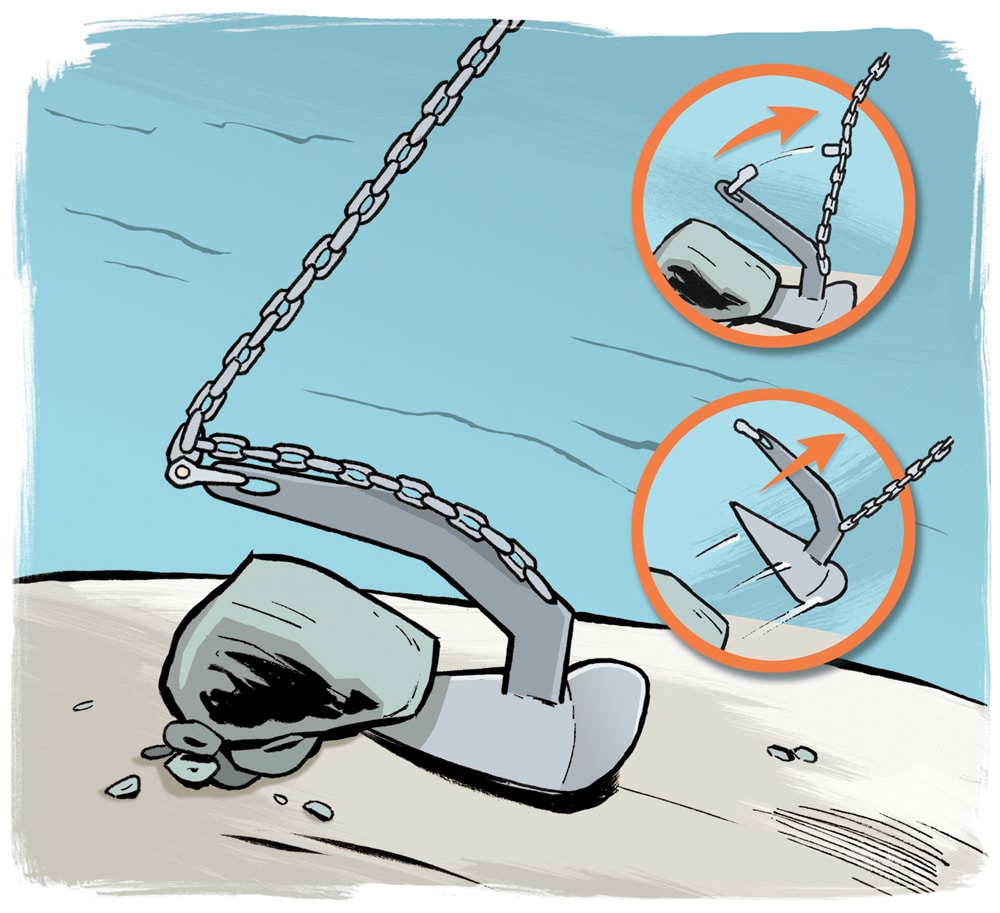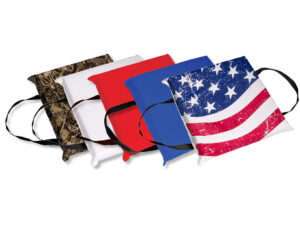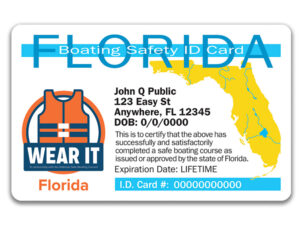
How to Free a Fouled Anchor
The windlass groans under the strain as the rode stretches taut. “Freakin’ anchor’s hung,” I hiss. We struggle to extricate it in a dicey tug of war with the ocean floor. I have tricks, but no guarantees. We finally free it, and I vow, “Never will I let this happen again.” But I know it will.
Wired for Action
If, like me, you engage in risky behavior in pursuit of fish, or need to anchor over “sticky” bottom while cruising, try trip-wiring the anchor. Many anchors have a hole in the forward part of the shank for this purpose. Drill a hole if your anchor doesn’t have one in the crown. Shackle the bitter end of the chain here, and then run it back along the shank, wiring a link to the normal shackle point. A length of thick, solid copper wire, like stripped residential wire, works; nylon tie-wraps also do the job. If you foul the anchor, the wire or wraps will break under enough pressure, allowing you to pull the anchor out by the crown rather than the tail of the shank. Have extra wire or wraps aboard to rerig. You can also get a commercially made setup called the Anchor Saver ($109.99 to $159.99, shop.anchorsaver.com) that works on the same principle.
New Angle
With or without a tripwire or Anchor Saver, try retrieving a fouled anchor from different angles. For example, if you were scoped out with the bow at 180 degrees, try pulling the anchor out backward by pulling on the rode from 0 degrees. Be careful not to foul the anchor line in a prop as you reposition, and be cautious not to swamp the cockpit if you are backing into seas.
Rubber-Band Trick
Many years ago, an old salt taught me the rubber-band trick, but it works only in calm conditions with relatively light, three-strand anchor lines that you can manhandle. It helps to wear a pair of gloves, and avoid wrapping the line around your hands. Pull up by hand on the fouled line, stretching it as tightly as possible, like a rubber band, and then let go. Powered by the sudden recoil, the anchor often shoots away from the snag. It might take a few tries, but it has worked for me at depths below 100 feet.
Cut Your Losses
If you foul the anchor in rough conditions, the best bet is to cut your losses — literally — and head back to the harbor. Things can go wrong quickly in heavy seas, especially in a small boat, so it’s prudent to have a sharp knife handy so you can immediately cut free. New ground tackle is relatively inexpensive, especially compared with the safety of your crew.









